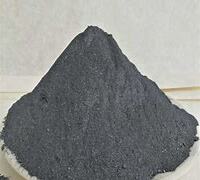**Boron: Tiny Element, Big Questions—Can It Harm You?**
(Is Boron Poisonous)
Boron is everywhere. You find it in soil, water, even the apples you eat. This quiet element hides in plain sight, doing jobs like helping plants grow or making glass stronger. But here’s the twist: can something so useful also be dangerous? Let’s dig into the science without the jargon.
First off, boron isn’t some lab-made chemical. It’s natural. Your body actually needs tiny amounts of it. Think bones, brain health, even how your body handles nutrients. Studies show small doses might help keep your joints working smoothly. But here’s the catch: “tiny” is the key word. Your body wants just a sprinkle—about 1 to 20 milligrams daily for adults. Go over that, and things get messy.
Picture this: a kid mistakes a bottle of laundry booster (loaded with boron compounds like borax) for candy. Not good. Swallowing a lot of boron at once can cause nausea, cramps, or worse. Workers in factories using boron products sometimes face skin rashes or breathing trouble if they’re exposed daily. Animals in studies didn’t fare well either—high doses led to damaged organs over time.
But hold on. Most people aren’t chugging laundry detergent. Everyday exposure is way lower. The boron in food or water won’t hurt you. A peanut butter sandwich? It’s got boron. So do raisins and avocados. Your body handles these bits just fine. The real risk pops up with accidents or industrial misuse.
Let’s talk numbers. Scientists use a term called LD50—the dose that’s lethal to half the test subjects. For boron, that’s around 5,000 milligrams per kilogram of body weight. To hit that, a 150-pound adult would need to swallow over 300 grams of pure boron. That’s like eating two cups of straight borax powder. Not exactly a realistic snack.
Still, rules exist for a reason. Governments set limits on boron in drinking water and workplace air. These rules aren’t just guesses—they’re based on years of watching how humans and animals react. For example, the World Health Organization says water shouldn’t have more than 2.4 milligrams of boron per liter. That’s roughly a drop in a swimming pool.
What about supplements? Health stores sell boron pills claiming to boost testosterone or heal arthritis. Here’s the thing: science isn’t fully sold on those benefits yet. And popping too many pills could push your boron intake into the danger zone. Experts say stick to food sources unless a doctor advises otherwise.
Then there’s the “natural” trap. Just because something’s natural doesn’t mean it’s safe. Arsenic is natural too. The dose makes the poison, as old chemists liked to say. Boron’s no different. Respect its power, and it stays helpful. Ignore the limits, and it bites back.
So yes, boron *can* be poisonous. But so can water if you guzzle gallons of it. The element itself isn’t evil—it’s about how we use it. Keep laundry products locked up, follow safety guides at work, and don’t treat supplements like candy. Do that, and boron stays on your team.
(Is Boron Poisonous)
Science keeps learning. New studies might tweak what we know about boron’s risks and perks. For now, stay curious, stay cautious, and let common sense lead the way.
Inquiry us
if you want to want to know more, please feel free to contact us. (nanotrun@yahoo.com)




